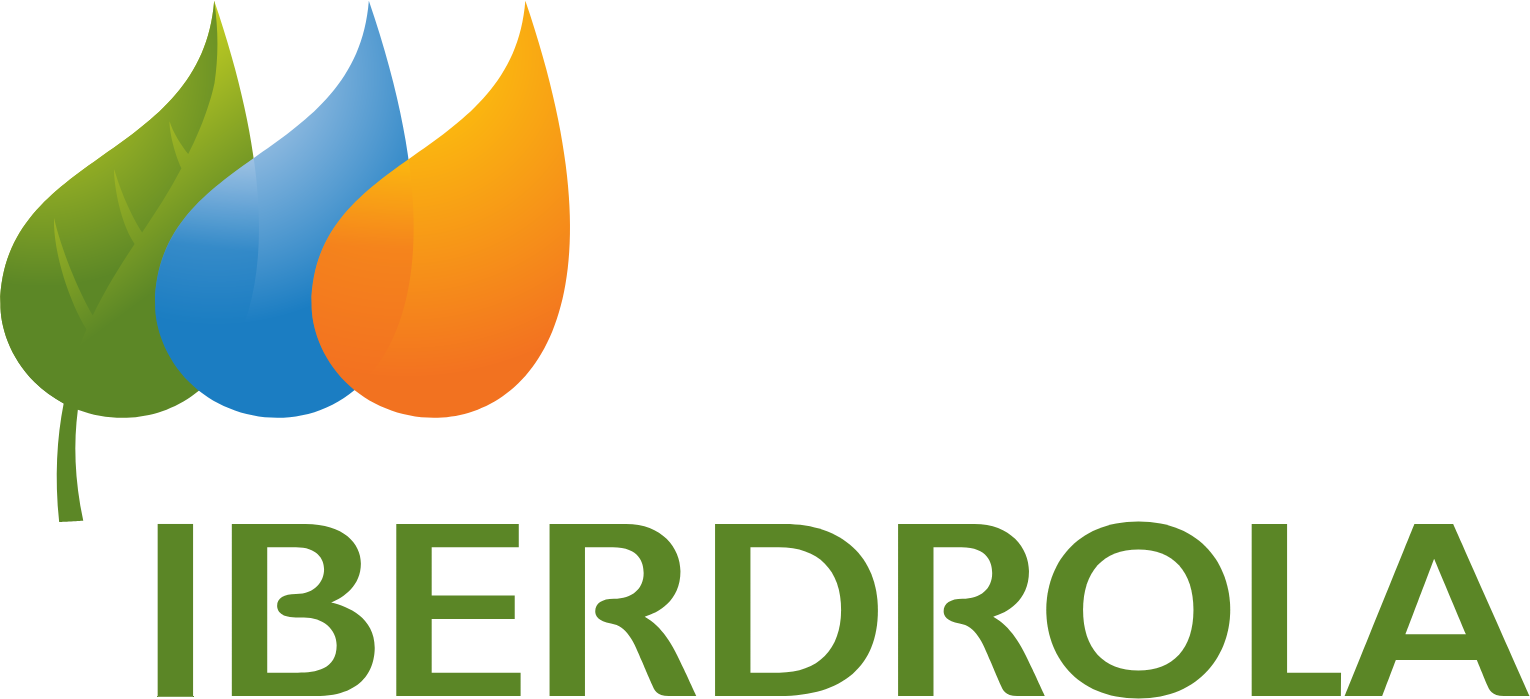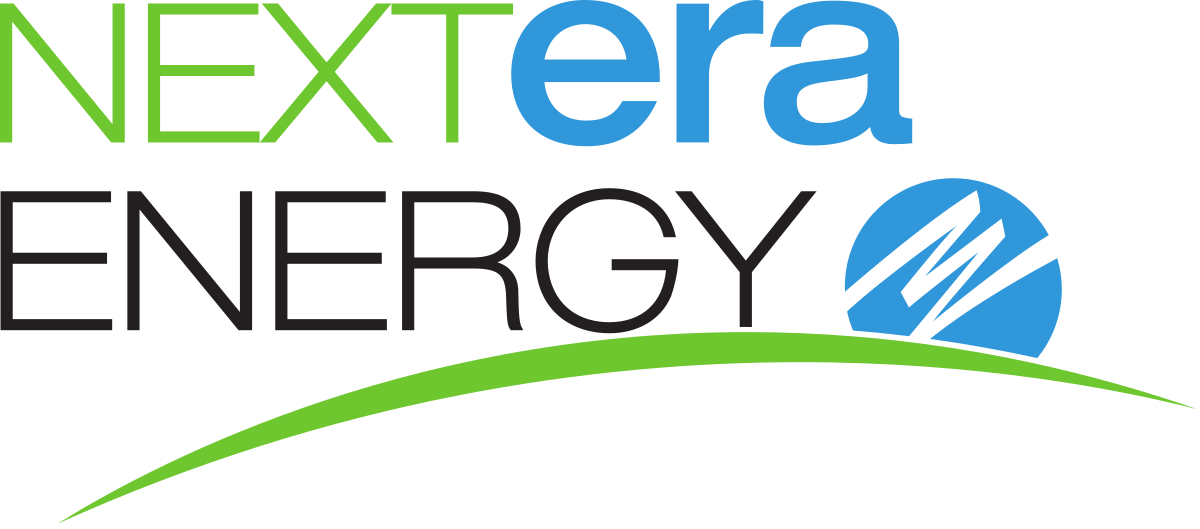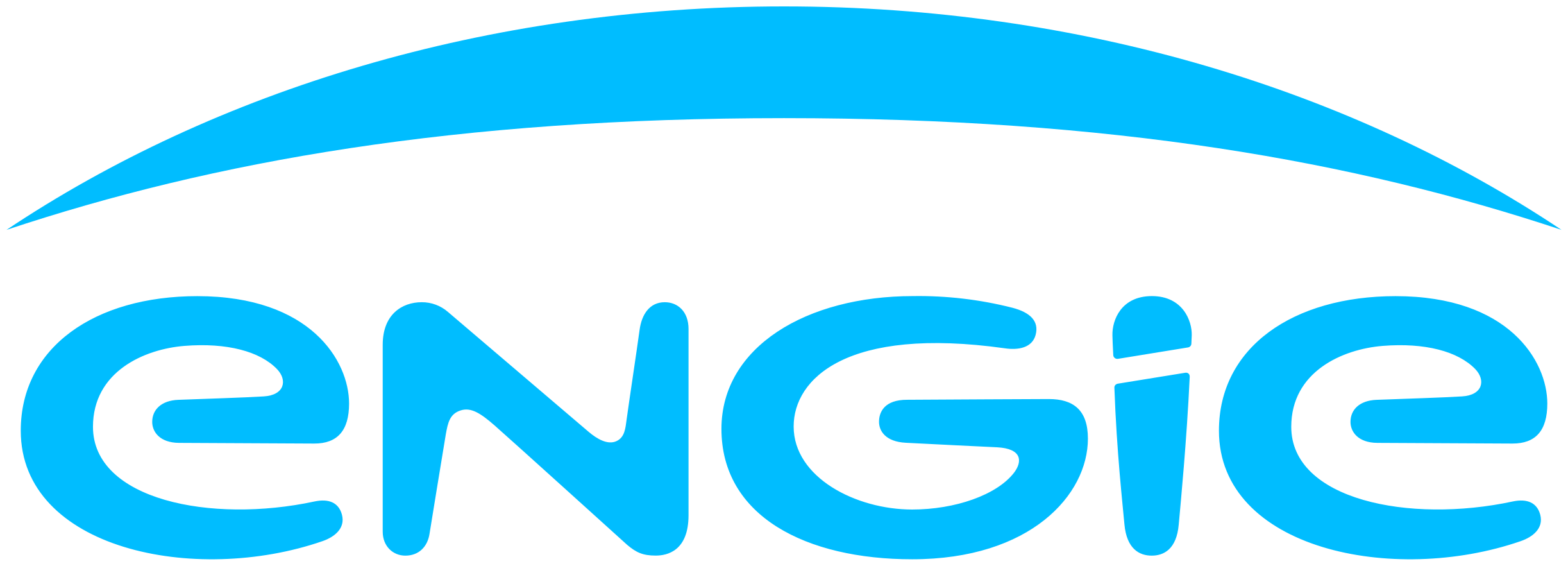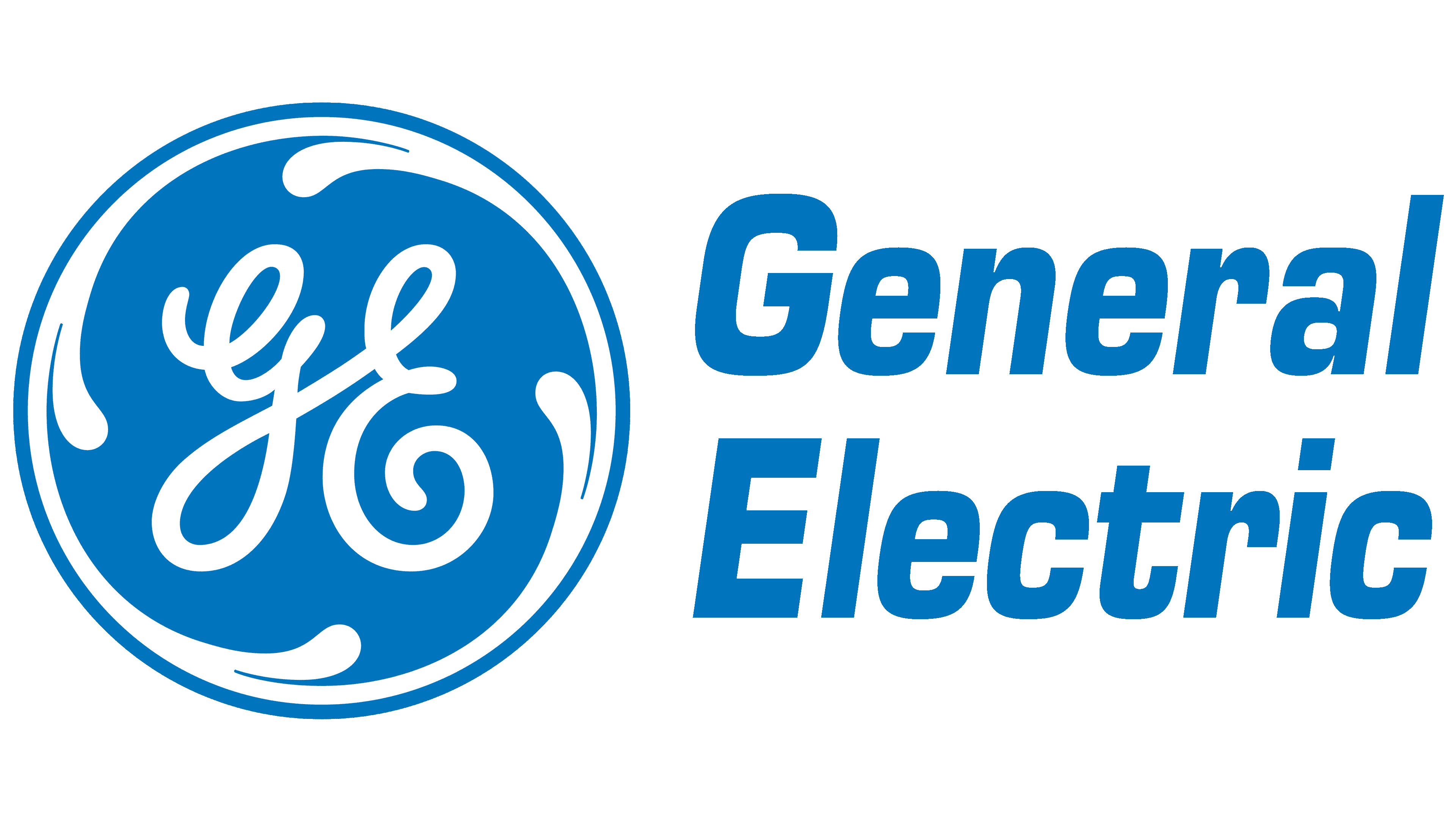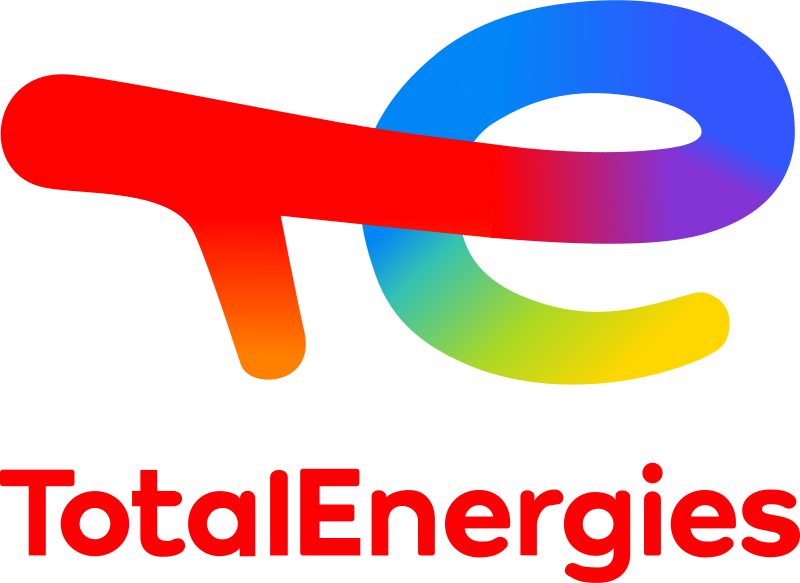Global Lithium-ion Battery Recycling Market By Battery Chemistry, By Recycling Process, By End Use Industry, By Region & Segmental Insights Trends and Forecast, 2024 – 2034
- Industry: Energy & Power
- Report ID: TNR-110-1264
- Number of Pages: 420
- Table/Charts : Yes
- August, 2024
- Base Year : 2024
- No. of Companies : 10+
- No. of Countries : 29
- Views : 10053
- Covid Impact Covered: Yes
- War Impact Covered: Yes
- Formats : PDF, Excel, PPT
The global lithium-ion battery recycling market is experiencing robust growth, driven by the rising adoption of electric vehicles (EVs) and increasing demand for sustainable energy solutions. As governments worldwide enforce stricter regulations on battery disposal and recycling, companies are investing heavily in advanced recycling technologies. Key market players are focusing on expanding their capacity to process the growing volume of spent batteries, particularly from the automotive and consumer electronics sectors.
According to recent statistics, the global lithium-ion battery recycling market was valued at approximately USD 3.88 Bn in 2023 projected to reach USD 39.75 Bn by 2034; expected to grow at a CAGR of 23.6% from 2024 to 2034. The market is benefiting from the rising awareness of the environmental and economic benefits of recycling, such as reducing raw material dependence and minimizing ecological impact. Overall, the market is poised for significant expansion, supported by technological advancements and regulatory frameworks.
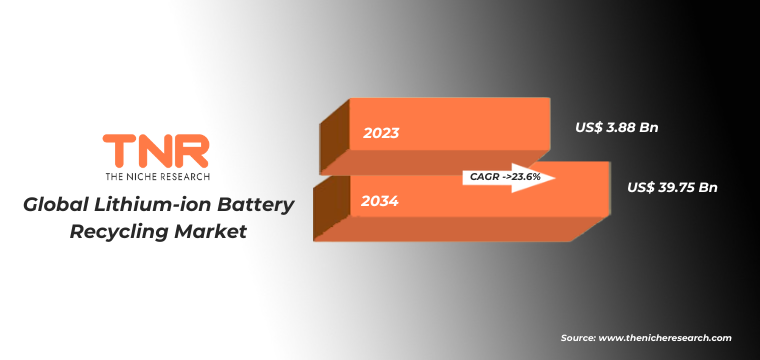
Global Lithium-ion Battery Recycling Market Segmental Analysis:
Global Lithium-ion Battery Recycling Market By Battery Chemistry
Lithium-titanate oxide (LTO) batteries are poised to stimulate growth in the lithium-ion battery recycling market due to their unique properties and increasing adoption in various applications. LTO batteries offer exceptional safety, longer lifespan, and rapid charging capabilities, making them ideal for use in electric vehicles (EVs), energy storage systems, and industrial applications. As the demand for these high-performance batteries rises, the need for efficient recycling solutions becomes critical to recover valuable materials and address environmental concerns. The market is expected to benefit from advancements in LTO battery recycling technologies, enabling companies to efficiently process and recycle these batteries, thereby reducing waste and promoting sustainability.
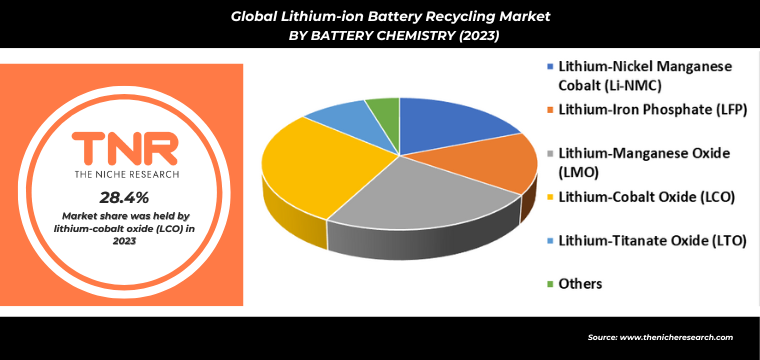
Global Lithium-ion Battery Recycling Market By Recycling Process
The hydrometallurgical process is the most widely used recycling method in the global lithium-ion battery recycling market due to its ability to recover high-purity metals like lithium, cobalt, and nickel efficiently. Unlike the pyrometallurgical process, which involves high-temperature smelting and can result in material loss, the hydrometallurgical process uses aqueous solutions to selectively extract valuable metals, ensuring minimal waste and higher recovery rates. This method is also more environmentally friendly, generating fewer emissions and consuming less energy. Its effectiveness in processing diverse battery chemistries and recovering critical materials positions it as the preferred choice in lithium-ion battery recycling.
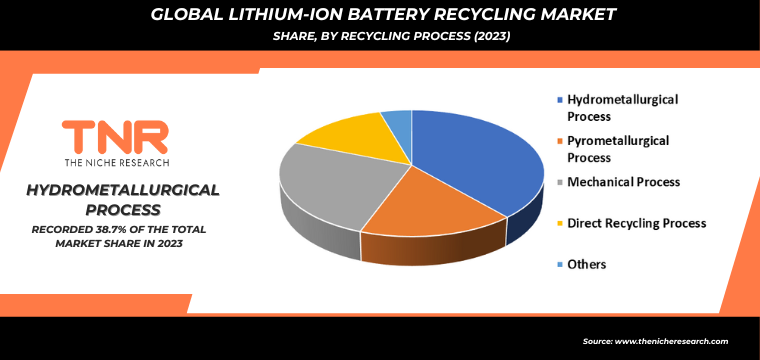
Global Lithium-ion Battery Recycling Market By End Use Industry
Consumer electronics, including smartphones, laptops, and tablets, are significant applications of lithium-ion battery recycling due to their widespread use and the high turnover of devices. As consumer electronics are replaced frequently, a growing volume of end-of-life batteries requires efficient recycling to recover valuable materials and mitigate environmental impact. This sector is expected to experience the fastest growth in the lithium-ion battery recycling market due to the increasing demand for electronic devices and stricter regulatory frameworks on electronic waste management. Advancements in recycling technologies and heightened consumer awareness about sustainability are further driving this growth, emphasizing the need for effective recycling solutions to address the rising volume of battery waste.
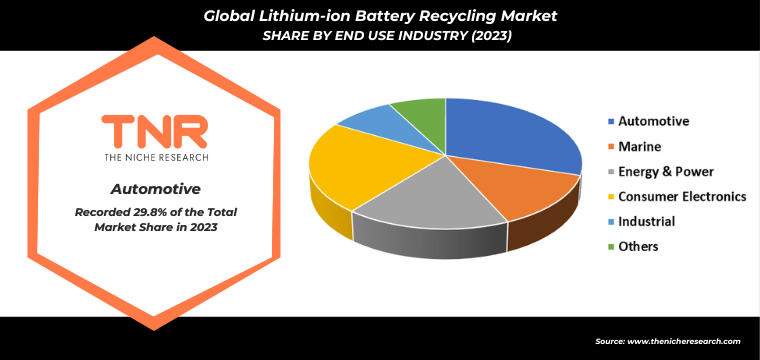
Global Lithium-ion Battery Recycling Market By Region
The Asia-Pacific region leads the global lithium-ion battery recycling market due to its robust manufacturing base for lithium-ion batteries and substantial demand for electronic devices and electric vehicles. Countries such as China, Japan, and South Korea are key drivers of this dominance. China, with its extensive battery production and rapidly growing EV market, significantly influences regional market trends. Japan and South Korea contribute through advanced recycling technologies and strong regulatory frameworks. The region’s focus on sustainability, coupled with governmental incentives for recycling and waste management, further supports its leading position in the market.
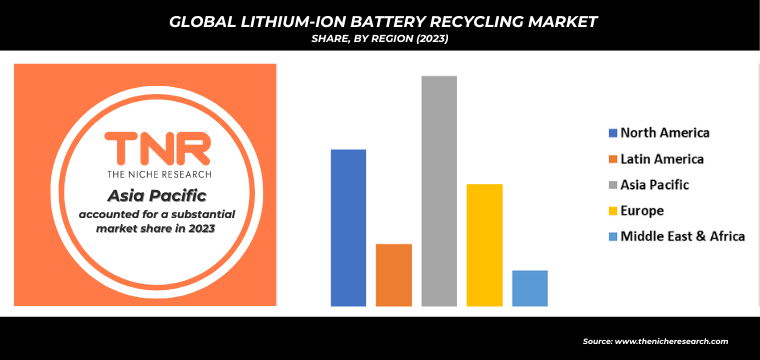
Global Lithium-ion Battery Recycling Market Dynamics
Global Lithium-ion Battery Recycling Market Growth Driver:
Rising Electric Vehicle Adoption: The surge in electric vehicle sales globally is driving the demand for lithium-ion battery recycling, as the need to manage end-of-life batteries and recover valuable materials intensifies.
Environmental Regulations: Stringent government regulations on battery disposal and recycling are propelling market growth, encouraging companies to adopt sustainable practices and invest in advanced recycling technologies to meet compliance standards and reduce environmental impact.
Global Lithium-ion Battery Recycling Market Restraint:
High Recycling Costs: The complex and energy-intensive processes involved in lithium-ion battery recycling result in high operational costs, posing a significant restraint on market growth, especially for smaller recycling companies.
Limited Recycling Infrastructure: The global lithium-ion battery recycling market faces challenges due to inadequate recycling infrastructure, particularly in developing regions, leading to inefficient collection and processing of spent batteries and hampering market expansion.
Global Lithium-ion Battery Recycling Market Opportunity:
Technological Advancements: Innovations in recycling technologies, such as direct recycling methods, present significant opportunities to enhance efficiency, reduce costs, and improve material recovery rates, driving growth in the lithium-ion battery recycling market.
Government Incentives: Increasing government incentives and subsidies for sustainable practices and recycling infrastructure development offer substantial opportunities for market players to expand operations and capitalize on the growing demand for lithium-ion battery recycling globally.
Global Lithium-ion Battery Recycling Market Trends:
Integration of AI in Recycling: The integration of artificial intelligence in lithium-ion battery recycling processes is becoming a trend, optimizing sorting and material recovery, improving efficiency, and reducing operational costs.
Strategic Partnerships: Companies are increasingly forming strategic partnerships with automakers and tech firms to secure a steady supply of spent batteries, streamline recycling processes, and jointly develop advanced technologies, driving growth in the market.
Competitive Landscape
The global lithium-ion battery recycling market is highly competitive, with key players focusing on expanding their recycling capacities, innovating processes, and forming strategic partnerships. Companies are striving to gain market share by offering cost-effective, sustainable recycling solutions and advanced technologies.
- In April 2023, Glencore, FCC Ámbito, and Iberdrola announced a collaboration to establish large-scale lithium-ion battery recycling solutions in Spain and Portugal. This partnership aims to address the sector’s significant medium to long-term challenge by developing a specialized facility for recycling lithium-ion batteries.
- In March 2023, Fortum Battery Recycling launched EV battery recycling operations in Kirchardt, Germany, providing collection and processing services for end-of-life batteries and production scrap. The facility can pre-treat over 3,000 tons of batteries annually and is linked to the Harjavalta site, where the hydrometallurgical process is conducted.
Some of the players operating in the lithium-ion battery recycling market are
- ACCUREC Recycling GmbH
- AkkuSer
- American Zinc Recycling Corp
- BATREC INDUSTRIE AG
- DOWA ECO-SYSTEM Co., Ltd.
- Duesenfeld
- Fortum
- Glencore
- Li-Cycle Corp.
- Lithion Recycling Inc.
- Neometals Ltd
- Redux GmbH
- Retriev Technologies Inc.
- San Lan Technologies Co., Ltd
- SNAM
- Sumitomo Metal Mining Co., Ltd.
- Umicore
- uRecycle Group
- Other Industry Participants
Global Lithium-ion Battery Recycling Market Scope:
| Report Specifications | Details |
| Market Revenue in 2023 | US$ 3.88 Bn |
| Market Size Forecast by 2034 | US$ 39.75 Bn |
| Growth Rate (CAGR) | 23.6% |
| Historic Data | 2016 – 2022 |
| Base Year for Estimation | 2023 |
| Forecast Period | 2024 – 2034 |
| Report Inclusions | Market Size & Estimates, Market Dynamics, Competitive Scenario, Trends, Growth Factors, Market Determinants, Key Investment Segmentation, Product/Service/Solutions Benchmarking |
| Segments Covered | By Battery Chemistry, By Recycling Process, By End Use Industry, By Region |
| Regions Covered | North America, Europe, Asia Pacific, Middle East & Africa, Latin America |
| Countries Covered | U.S., Canada, Mexico, Rest of North America, France, The UK, Spain, Germany, Italy, Nordic Countries (Denmark, Finland, Iceland, Sweden, Norway), Benelux Union (Belgium, The Netherlands, Luxembourg), Rest of Europe, China, Japan, India, New Zealand, Australia, South Korea, Southeast Asia (Indonesia, Thailand, Malaysia, Singapore, Rest of Southeast Asia), Rest of Asia Pacific, Saudi Arabia, UAE, Egypt, Kuwait, South Africa, Rest of Middle East & Africa, Brazil, Argentina, Rest of Latin America |
| Key Players | ACCUREC Recycling GmbH, AkkuSer, American Zinc Recycling Corp, BATREC INDUSTRIE AG, DOWA ECO-SYSTEM Co., Ltd., Duesenfeld, Fortum, Glencore, Li-Cycle Corp., Lithion Recycling Inc., Neometals Ltd, Redux GmbH, Retriev Technologies Inc., San Lan Technologies Co., Ltd, SNAM, Sumitomo Metal Mining Co., Ltd., Umicore, uRecycle Group |
| Customization Scope | Customization allows for the inclusion/modification of content pertaining to geographical regions, countries, and specific market segments. |
| Pricing & Procurement Options | Explore purchase options tailored to your specific research requirements |
| Contact Details | Consult With Our Expert
Japan (Toll-Free): +81 663-386-8111 South Korea (Toll-Free): +82-808- 703-126 Saudi Arabia (Toll-Free): +966 800-850-1643 United Kingdom: +44 753-710-5080 United States: +1 302-232-5106 E-mail: askanexpert@thenicheresearch.com
|
Global Lithium-ion Battery Recycling Market Segmentation:
By Battery Chemistry
- Lithium-Nickel Manganese Cobalt (Li-NMC)
- Lithium-Iron Phosphate (LFP)
- Lithium-Manganese Oxide (LMO)
- Lithium-Cobalt Oxide (LCO)
- Lithium-Titanate Oxide (LTO)
- Others
By Recycling Process
- Hydrometallurgical Process
- Pyrometallurgical Process
- Mechanical Process
- Direct Recycling Process
- Others
By End Use Industry
- Automotive
- Marine
- Energy & Power
- Consumer Electronics
- Industrial
- Others
By Region
- North America (U.S., Canada, Mexico, Rest of North America)
- Europe (France, The UK, Spain, Germany, Italy, Nordic Countries (Denmark, Finland, Iceland, Sweden, Norway), Benelux Union (Belgium, The Netherlands, Luxembourg), Rest of Europe)
- Asia Pacific (China, Japan, India, New Zealand, Australia, South Korea, Southeast Asia (Indonesia, Thailand, Malaysia, Singapore, Rest of Southeast Asia), Rest of Asia Pacific)
- Middle East & Africa (Saudi Arabia, UAE, Egypt, Kuwait, South Africa, Rest of Middle East & Africa)
- Latin America (Brazil, Argentina, Rest of Latin America)
Report Layout:
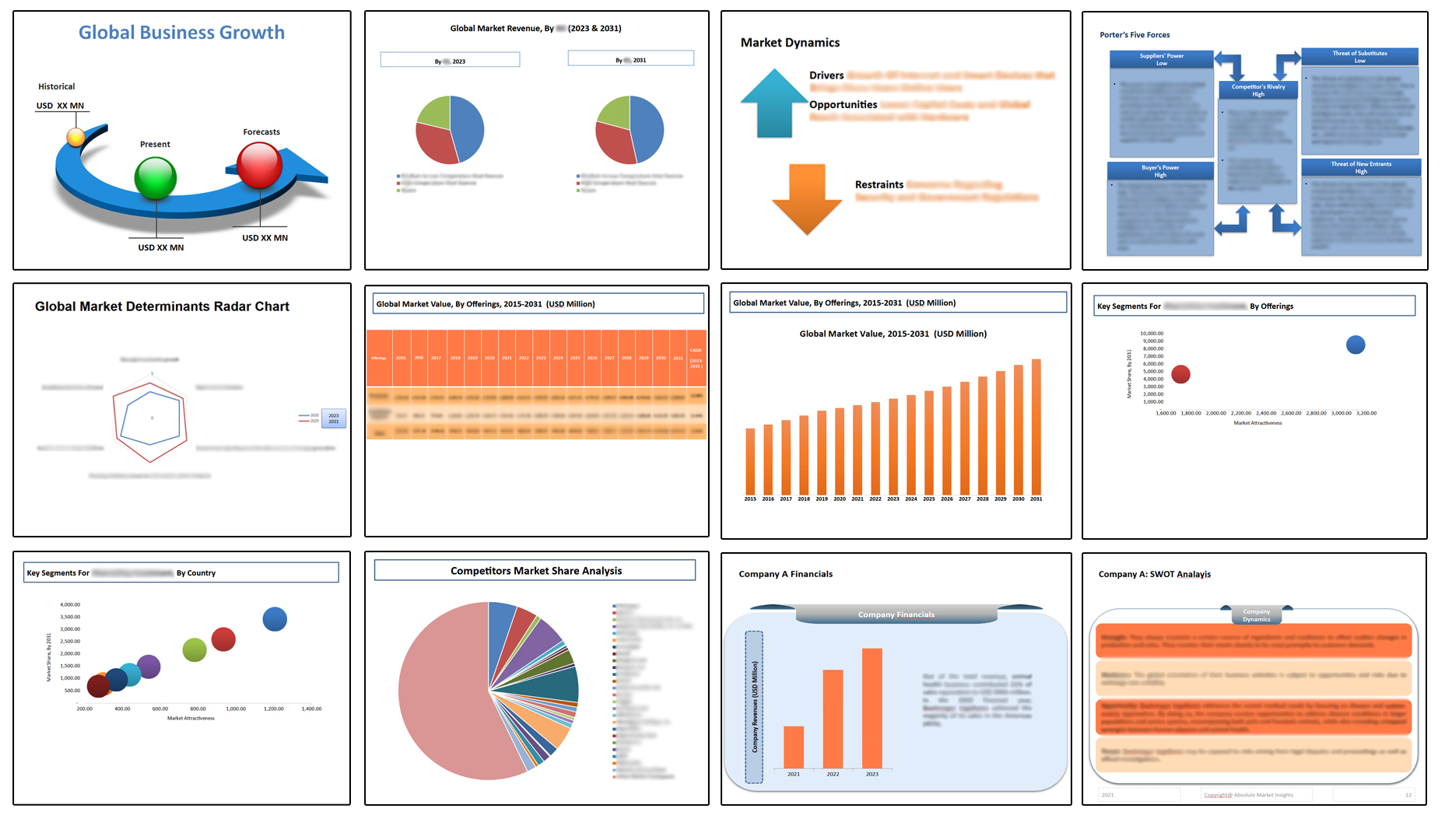
Table of Contents
Note: This ToC is tentative and can be changed according to the research study conducted during the course of report completion.
**Exclusive for Multi-User and Enterprise User.
Global Lithium-ion Battery Recycling Market Segmentation:
By Battery Chemistry
- Lithium-Nickel Manganese Cobalt (Li-NMC)
- Lithium-Iron Phosphate (LFP)
- Lithium-Manganese Oxide (LMO)
- Lithium-Cobalt Oxide (LCO)
- Lithium-Titanate Oxide (LTO)
- Others
By Recycling Process
- Hydrometallurgical Process
- Pyrometallurgical Process
- Mechanical Process
- Direct Recycling Process
- Others
By End Use Industry
- Automotive
- Marine
- Energy & Power
- Consumer Electronics
- Industrial
- Others
By Region
- North America (U.S., Canada, Mexico, Rest of North America)
- Europe (France, The UK, Spain, Germany, Italy, Nordic Countries (Denmark, Finland, Iceland, Sweden, Norway), Benelux Union (Belgium, The Netherlands, Luxembourg), Rest of Europe)
- Asia Pacific (China, Japan, India, New Zealand, Australia, South Korea, Southeast Asia (Indonesia, Thailand, Malaysia, Singapore, Rest of Southeast Asia), Rest of Asia Pacific)
- Middle East & Africa (Saudi Arabia, UAE, Egypt, Kuwait, South Africa, Rest of Middle East & Africa)
- Latin America (Brazil, Argentina, Rest of Latin America)
The Niche Research approach encompasses both primary and secondary research methods to provide comprehensive insights. While primary research is the cornerstone of our studies, we also incorporate secondary research sources such as company annual reports, premium industry databases, press releases, industry journals, and white papers.
Within our primary research, we actively engage with various industry stakeholders, conducting paid interviews and surveys. Our meticulous analysis extends to every market participant in major countries, allowing us to thoroughly examine their portfolios, calculate market shares, and segment revenues.
Our data collection primarily focuses on individual countries within our research scope, enabling us to estimate regional market sizes. Typically, we employ a bottom-up approach, meticulously tracking trends in different countries. We analyze growth drivers, constraints, technological innovations, and opportunities for each country, ultimately arriving at regional figures.Our process begins by examining the growth prospects of each country. Building upon these insights, we project growth and trends for the entire region. Finally, we utilize our proprietary model to refine estimations and forecasts.
Our data validation standards are integral to ensuring the reliability and accuracy of our research findings. Here’s a breakdown of our data validation processes and the stakeholders we engage with during our primary research:
- Supply Side Analysis: We initiate a supply side analysis by directly contacting market participants, through telephonic interviews and questionnaires containing both open-ended and close-ended questions. We gather information on their portfolios, segment revenues, developments, and growth strategies.
- Demand Side Analysis: To gain insights into adoption trends and consumer preferences, we reach out to target customers and users (non-vendors). This information forms a vital part of the qualitative analysis section of our reports, covering market dynamics, adoption trends, consumer behavior, spending patterns, and other related aspects.
- Consultant Insights: We tap into the expertise of our partner consultants from around the world to obtain their unique viewpoints and perspectives. Their insights contribute to a well-rounded understanding of the markets under investigation.
- In-House Validation: To ensure data accuracy and reliability, we conduct cross-validation of data points and information through our in-house team of consultants and utilize advanced data modeling tools for thorough verification.
The forecasts we provide are based on a comprehensive assessment of various factors, including:
- Market Trends and Past Performance (Last Five Years): We accurately analyze market trends and performance data from preceding five years to identify historical patterns and understand the market’s evolution.
- Historical Performance and Growth of Market Participants: We assess the historical performance and growth trajectories of key market participants. This analysis provides insights into the competitive landscape and individual company strategies.
- Market Determinants Impact Analysis (Next Eight Years): We conduct a rigorous analysis of the factors that are projected to influence the market over the next eight years. This includes assessing both internal and external determinants that can shape market dynamics.
- Drivers and Challenges for the Forecast Period:Identify the factors expected to drive market growth during the forecast period, as well as the challenges that the industry may face. This analysis aids in deriving an accurate growth rate projection.
- New Acquisitions, Collaborations, or Partnerships: We keep a close watch on any new acquisitions, collaborations, or partnerships within the industry. These developments can have a significant impact on market dynamics and competitiveness.
- Macro and Micro Factors Analysis:A thorough examination of both macro-level factors (e.g., economic trends, regulatory changes) and micro-level factors (e.g., technological advancements, consumer preferences) that may influence the market during the forecast period.
- End-User Sentiment Analysis: To understand the market from the end-user perspective, we conduct sentiment analysis. This involves assessing the sentiment, preferences, and feedback of the end-users, which can provide valuable insights into market trends.
- Perspective of Primary Participants: Insights gathered directly from primary research participants play a crucial role in shaping our forecasts. Their perspectives and experiences provide valuable qualitative data.
- Year-on-Year Growth Trend: We utilize a year-on-year growth trend based on historical market growth and expected future trends. This helps in formulating our growth projections, aligning them with the market’s historical performance.
Research process adopted by TNR involves multiple stages, including data collection, validation, quality checks, and presentation. It’s crucial that the data and information we provide add value to your existing market understanding and expertise. We have also established partnerships with business consulting, research, and survey organizations across regions and globally to collaborate on regional analysis and data validation, ensuring the highest level of accuracy and reliability in our reports.
